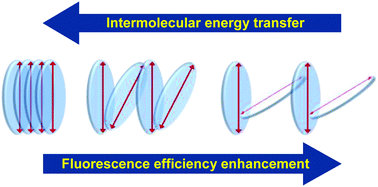Impact of molecular orientation on fluorescence emission enhancement in aggregates
Abstract
Enhanced fluorescence emission in molecular aggregates and solids has received wide attention in view of its extensive application potential. The uncommon effect of enhancement over quenching has largely been attributed to the rigidification of the molecule and its environment, and the restriction of intramolecular non-radiative excited state decay channels. The critical role of molecular orientations in hindering intermolecular energy transfer and the associated non-radiative excited state energy loss has been explored in recent studies. Further examples are demonstrated to argue for a closer look at the concomitant role of intra and intermolecular effects in realizing enhanced fluorescence in molecular aggregates.

- This article is part of the themed collection: 2018 Materials Chemistry Frontiers Review-type Articles


 Please wait while we load your content...
Please wait while we load your content...